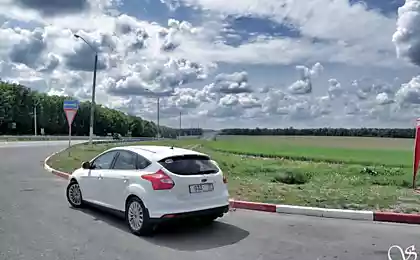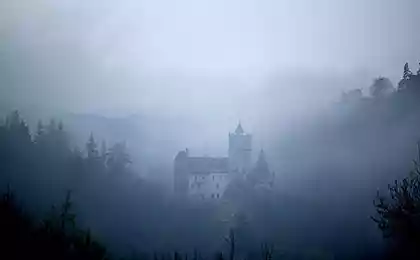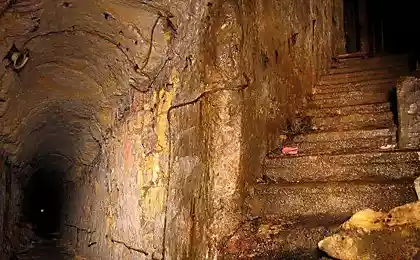599
Paris Catacombs
Writes elwer-gorse:
A huge network of passages that grew in the belly of Paris. The total length of the running in the tens of kilometers.
The initial emergence of developments related to the mining of limestone, which is under a thick layer of soil. Thus, the average depth of excavation was about 25 meters. This is far below the level of the Paris sewer and subway. Network moves mainly concentrated in central Paris. there are three most developed independent systems scattered under the busy street. Each of them developed independently at different times. I was able to visit the new and old system Denfert Rocherout ...
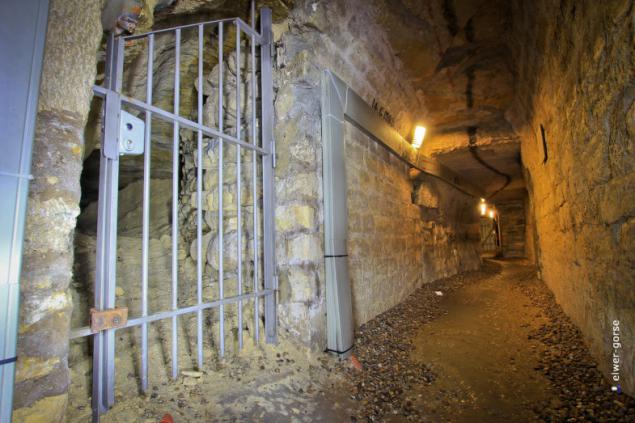
1.Shema catacombs. The winding sections - the old system (end of the XVIII century), direct - a new (mid XIX). The poster on the right compared with the occurrence of underground and sewage.
The new system is more monolithic. Hewn stone, straight narrow passages, the trace of which almost coincides with the trace of the streets. There are also branches in backlogs and third-party drifts.
The old system is more chaotic, masonry lined the aisle planed, sinuous moves. Here, a large number of branches and backlog. But the most interesting thing in her womb, more on that later.

2. Karst map of underground workings over Paris.
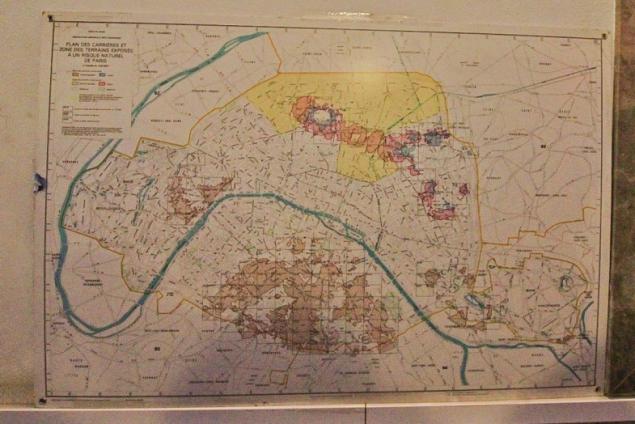
3. By a very narrow spiral staircase down to the -10 mark. Here is a small gallery, and another set to the level - 23 meters.

4. The first impression is a bit ordinary. I expected to see something in the likeness of suburban quarries, but as you can see all gorazo civility.

5. Throughout the central corridor carried coverage

6. Moves, though straight, but sometimes absurd. Here at this crossroads turn is about 320 *, almost in parallel with it.

7. The new system was built after the end of production of limestone, it is noticeable on smooth masonry.
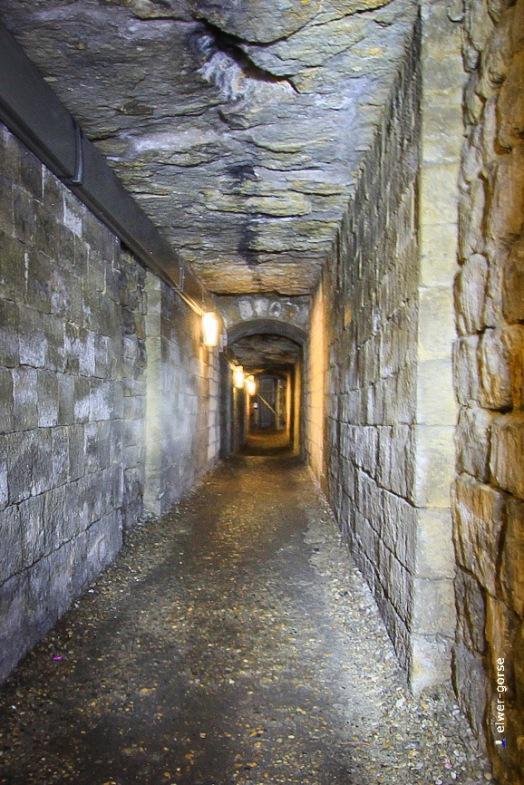
8. The main objective was connecting role between the various buildings above.
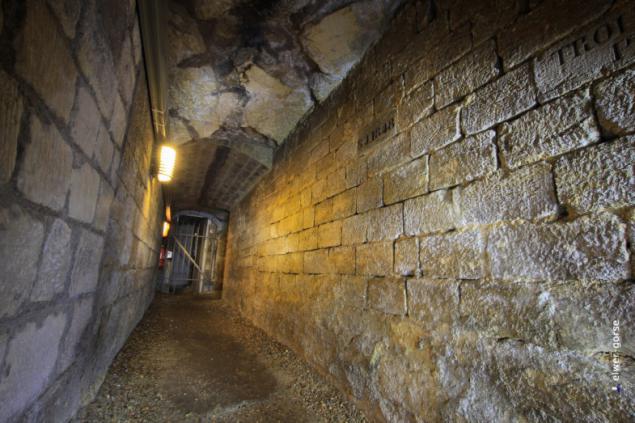
9. Such corridors flattened tens of meters to a variety of inputs, gradually flowing into one channel (in the shape of Christmas trees). ps: look at the lower part of the door

10. One of the drifts.

11. In this photo you can see a rather sharp slope

12.
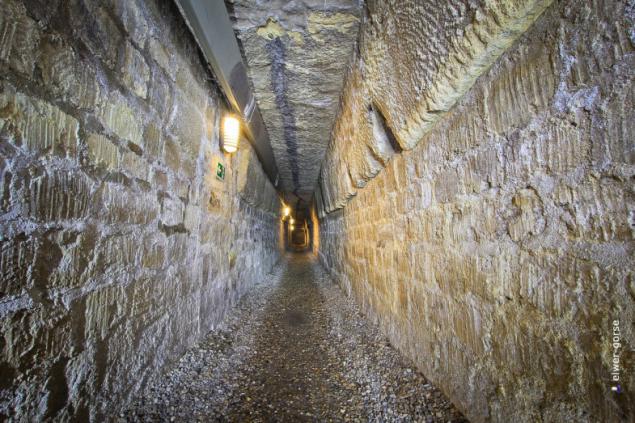
13. Fork. To the right is exactly the same corridor

14.
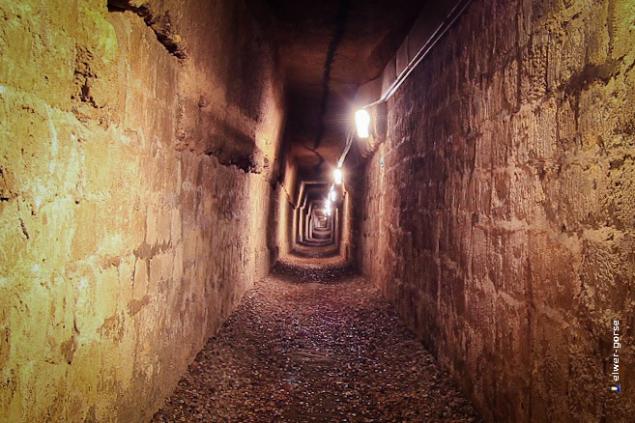
15. Earlier this place was a small room, but in the middle of the century he XXogo partially collapsed

16. From another perspective. On the background is visible the door leading into the ventilation shaft. Yes, and there is

17. zabutovany grotto
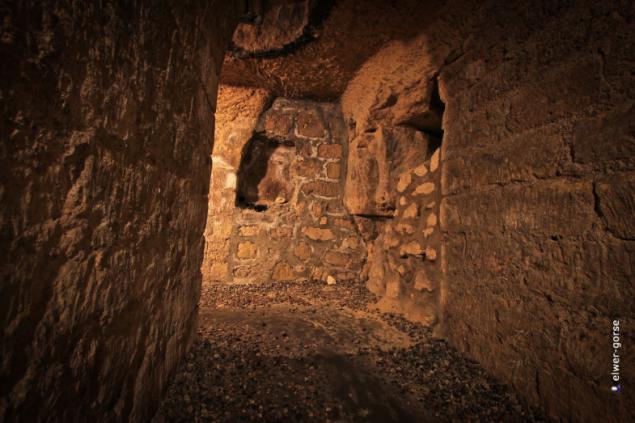
18. stenah- plaque at nothing but tombstones of famous figures. Somewhere for laying vessels fitted with their ashes
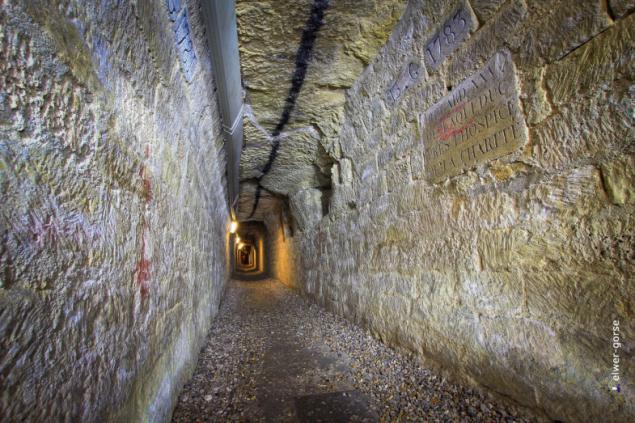
19.
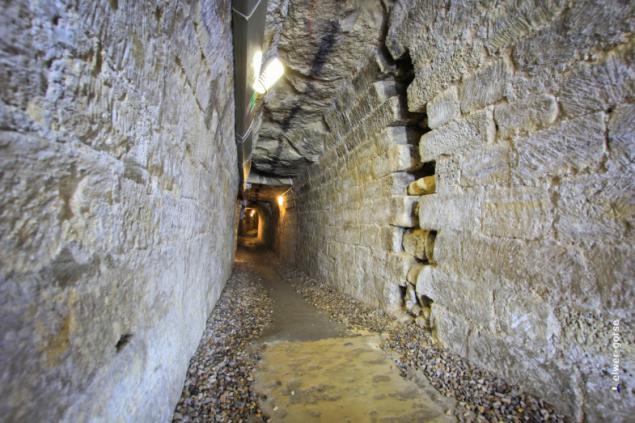
20. Slaughter

21.
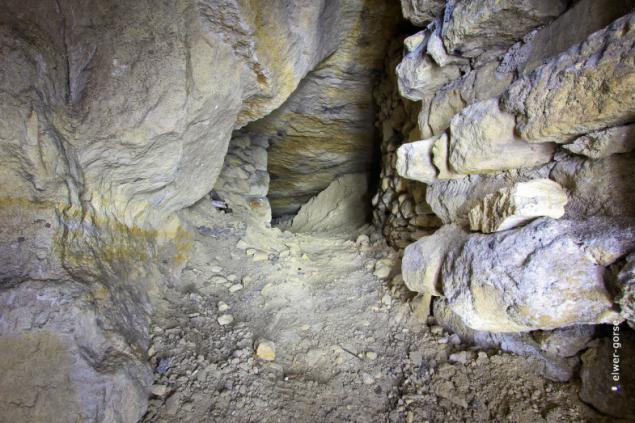
22. The old system
via elwer-gorse
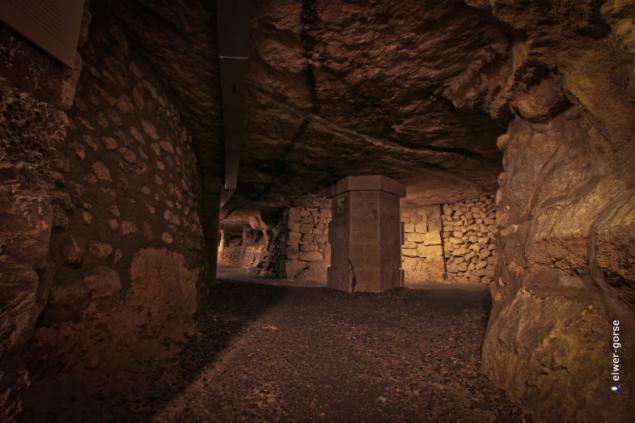
Source:
A huge network of passages that grew in the belly of Paris. The total length of the running in the tens of kilometers.
The initial emergence of developments related to the mining of limestone, which is under a thick layer of soil. Thus, the average depth of excavation was about 25 meters. This is far below the level of the Paris sewer and subway. Network moves mainly concentrated in central Paris. there are three most developed independent systems scattered under the busy street. Each of them developed independently at different times. I was able to visit the new and old system Denfert Rocherout ...

1.Shema catacombs. The winding sections - the old system (end of the XVIII century), direct - a new (mid XIX). The poster on the right compared with the occurrence of underground and sewage.
The new system is more monolithic. Hewn stone, straight narrow passages, the trace of which almost coincides with the trace of the streets. There are also branches in backlogs and third-party drifts.
The old system is more chaotic, masonry lined the aisle planed, sinuous moves. Here, a large number of branches and backlog. But the most interesting thing in her womb, more on that later.

2. Karst map of underground workings over Paris.

3. By a very narrow spiral staircase down to the -10 mark. Here is a small gallery, and another set to the level - 23 meters.

4. The first impression is a bit ordinary. I expected to see something in the likeness of suburban quarries, but as you can see all gorazo civility.

5. Throughout the central corridor carried coverage

6. Moves, though straight, but sometimes absurd. Here at this crossroads turn is about 320 *, almost in parallel with it.

7. The new system was built after the end of production of limestone, it is noticeable on smooth masonry.

8. The main objective was connecting role between the various buildings above.

9. Such corridors flattened tens of meters to a variety of inputs, gradually flowing into one channel (in the shape of Christmas trees). ps: look at the lower part of the door

10. One of the drifts.

11. In this photo you can see a rather sharp slope

12.

13. Fork. To the right is exactly the same corridor

14.

15. Earlier this place was a small room, but in the middle of the century he XXogo partially collapsed

16. From another perspective. On the background is visible the door leading into the ventilation shaft. Yes, and there is

17. zabutovany grotto

18. stenah- plaque at nothing but tombstones of famous figures. Somewhere for laying vessels fitted with their ashes

19.

20. Slaughter

21.

22. The old system
via elwer-gorse

Source:








